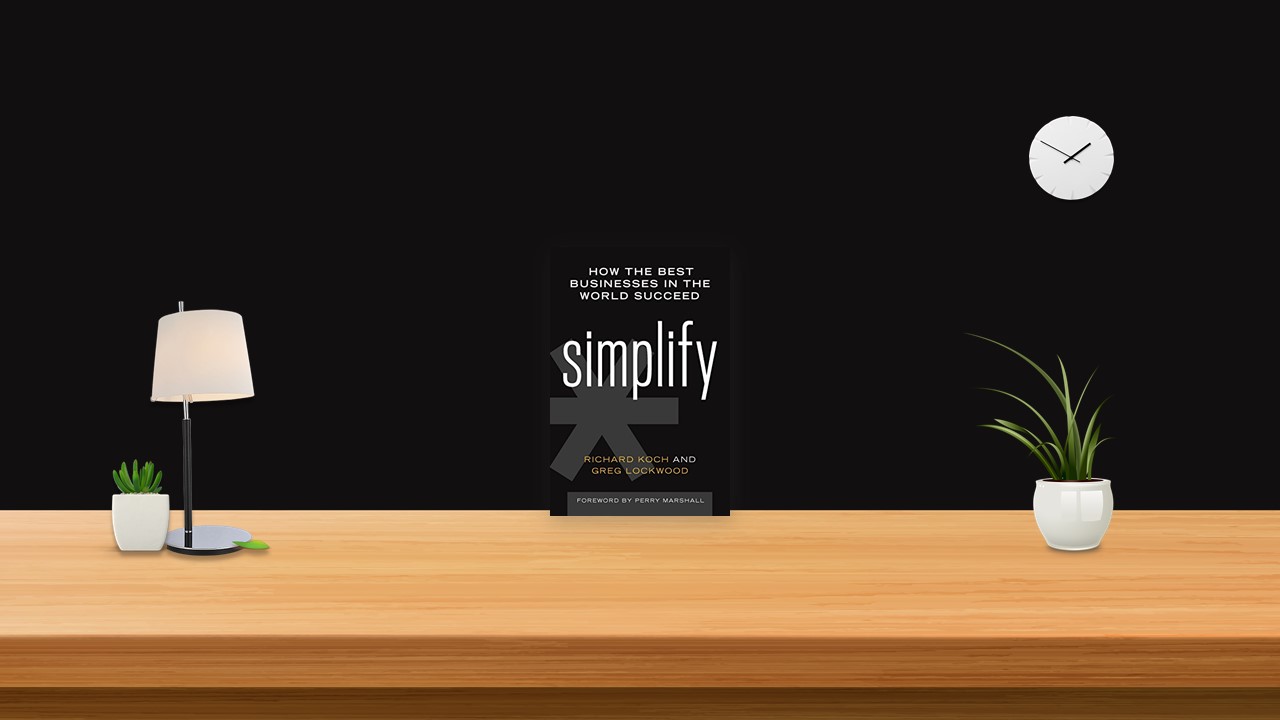Price Simplifying: Ford
One way to create a huge new market — with a different type of customer, only able or willing to pay a much lower price — is to simplify your product so that it is much easier and cheaper to make, and hence sell.
In order to price-simplify, you need to reduce the price by at least 50 percent. This does not need to happen all at once, but you need to continue cutting costs and prices each year — by about 10 percent a year.
Take a lesson from Ford:
- Redesign your product from first principles, cutting out unnecessary or costly parts.
- Reduce product-line variety and if possible standardize on a single “universal product.”
- Reduce the number of components.
- Eliminate frills and unnecessary options.
- Use different, new, lighter, and cheaper materials.
- Go for volume and production facilities that are far larger than those of your rivals.
- Organize tasks to maximize the specialization of your workforce.
- Automate tasks.
If you are a price-simplifier, cutting your prices is the primary objective. But, like Ford, also increase your product’s quality, utility, and ease of use if this can be done without incurring extra costs.
Price-Simplifying: IKEA
IKEA proves that, with imagination and the right template, prices can be more than halved — in its case by between 50 and 80 percent.
Ingvar Kamprad constructed a new business system based on self-assembly of furniture, stylish product design, giant stores, massive volume of sales per product line, and control of third-party manufacturers, who were integrated into the IKEA system. Can you think of a new business system for your industry that could enable you to cut prices by more than 50 percent?
IKEA integrated its customers into the production and retailing system, persuading them to do much of the work. Again, is there a parallel with your own industry, or could there be?
Customers play ball not just because of extremely low prices but also because IKEA offers them advantages and an experience that other retailers do not. Are there ways in which your firm — or a new venture — could offer customers advantages that would not cost you very much, or would even increase profits?
IKEA’s system now appears to be impregnable because the firm’s market share and very high sales levels protect it from imitators. This was not inevitable, however: if a quick-thinking rival had been fast enough to imitate IKEA’s system and implemented it outside Sweden. So, if you invent a way of price-simplifying that works, be sure to roll it out internationally before local rivals have a chance to copy it.
Proposition-Simplifying: Apple
Steve Jobs was a different kind of simplifier from our previous examples. He was a proposition-simplifier who aimed to make an “insanely great” product. Do you find it easier to imagine yourself as a price- or a proposition-simplifier? What about your company?
Price-simplifiers create or enlarge a mass market. With the Mac, Apple served the middle and upper echelons of users, who were willing to pay a significant premium for a more intuitive, useful, and beautiful product. Do you think this might work in your industry?
In the same broad market, price- and proposition-simplifiers can happily coexist, each with their distinctive customer appeal, and each with their distinctive commercial advantage. For price-simplifiers, it is a mass market. For most proposition-simplifiers, it is higher net margins. Which of these advantages do you think your organization would value more?
The worst fate, as with IBM, is to fall between the two simplifying stools — to be out-proposition-simplified and out-price-simplified. No matter how iconic the brand, how lofty the reputation, how high the installed base of users, how clever the executives, or even how rich the company, for those stuck in the middle, the knacker’s yard beckons. Is this a danger for your firm?
Proposition-Simplifying: Uber
As with price-simplifying, proposition-simplifying can dramatically enlarge a market. While price can make a product affordable for more people, a better proposition can result in much more frequent use of a product.
If you are a strong proposition-simplifier, you can create word-of-mouth referral, resulting in explosive growth with little investment in customer acquisition. If you move first and/or fastest, you can gain an enormous advantage in building the best service — because of the iron laws of networks — as well as really strong barriers against your rivals. One further important advantage of moving fast is that it enables you to raise substantial funding on the most attractive terms: that is, at the highest valuations. Speed therefore reinforces a virtuous circle.
Where it is relatively easy to imitate a product or service, constructing a business system around it which builds barriers against your opponents becomes vital for your long-term success. In Uber’s case the ability to use the service in every U.S. city, and in most of the world’s other major cities, confers a huge edge.
Network effects, economies of scale and other volume-based economic “goods” necessitate an intensified competitive stance. If you are playing in one of these markets you have to become the leading firm, and you have to do it really fast. So, if you can, destroy or marginalize your rivals in the early days.
The “economic goods” do not change over time, and the same is generally true of the elements of business systems. But platform technologies change constantly. New enabling technologies are often leading indicators of where the next great wave of innovation can be created.
Price-Simplifying: Key Points
The sole objective of price-simplifiers is to cut costs by at least half
- Ford: Reduce variety, redesign product, introduce new production system (massive investment and invention of the assembly line), use better-quality materials.
- IKEA: Redesign products, control furniture-makers, reduce variety, build giant stores, co-opt customers (self-service, self-delivery, self-assembly).
- McDonald’s: Reduce variety, automate, speed up service, co-opt customers and franchisees, use better-quality ingredients.
- Penguin: Reduce variety, create new distribution channels, raise quality of content, lower overheads, co-opt authors and other publishers.
- Honda: Reduce variety, scale down product, lower costs of labor and of the main component (the engine).
- Pepsi-Cola: Offer twice as much product for the same price, use effective advertising, introduce new distribution system, exploit market leader’s price umbrella.
To cut prices in half, you need to redesign and simplify your product from first principles.
- Subtract features
- Reduce variety
- Create a universal product
- Streamline production
- Lower costs
You must also redesign your business system to build a simple, proprietary system that lets you deliver stunningly low prices that your rivals cannot match.
Your best defense against imitation is to scale up so quickly and extensively that no nooks or crannies are left in which a rival can take root. Nowadays this requires early, preferably immediate, international rollout — whatever it costs and however hard it might seem to achieve.
Proposition-Simplifying: Key Points
The aim of the proposition-simplifier is to make the product or service a joy to use by increasing ease of use, usefulness and art
- Apple Macintosh: Create high-end customer segment, make product more intuitive for the user, design a user-friendly and beautiful item that is also more useful than existing machines.
- Uber: Make experience of using a taxi quicker, more friendly and more reliable, and also often cheaper, through new software.
- BCG: Create new high-end “strategy” product (the first new consulting product since the introduction of “time and motion”), condense ideas, so that devising strategy becomes memorable and fun, select a few principles so that any properly trained person can use them, communicate shared framework throughout the firm, prioritize actions and standardize projects.
- Bain & Company: Create new high-end “CEO” service, co-opt the CEO, increase ease of profit improvement throughout the client firm, increase usefulness of consulting process.
- General Motors: Create new segments in middle and top of the market, each targeted at different customers and with different styles and appearance, raise customer utility through brand differentiation and new annual models, introduce new features to make cars a joy to drive, and raise ease of purchase for customers and dealers by extending credit.
The heart of proposition-simplifying is total product or service redesign — your simplifying should be radical, so that the product is easier to use, more useful, and more beautiful.
The trick is to increase ease of use, making the product a joy to use. The five best ways to achieve this are to
- Eliminate superfluous features and components
- Make it intuitive to use
- Make it faster
- Make it smaller, lighter and/or more portable
- Make it easier to access
Make the product more useful without making it harder to use; greater utility without greater ease of use is pointless.
Proposition-simplifying can lead to huge increases in sales and profits, perhaps sustained over a decade or more. But the greatest challenge is to stay ahead of imitators. The timescale for enjoying a secure lead with new products appears to be decreasing, so constant innovation is necessary for sustained success. The greatest danger is that the innovator’s creative wellsprings become exhausted.
Simplifying in the Big Picture
You cannot wait to simplify. But don’t expect your new path to be easy:
- Simplifying is not a magic bullet, nor an infallible formula for success.
- You must come up with a radical simplifying idea.
- Then you must develop a product or service that is dramatically simpler than any existing product or service — something that is much simpler to make (and therefore at least 50 percent cheaper) or so much simpler to use that your customers will pay a premium to do so.
- Moreover, the product or service must be so simple that it has the potential to become universal. Geography, culture and other barriers to universal use must be conquered or transcended, not necessarily immediately, but certainly at some point in the not too distant future. Ray Kroc, for example, probably did not have Azerbaijan in his sights when he took control of McDonald’s. But nowadays any delay in making a simple product or service universal is becoming increasingly hazardous.
- The business system must be redesigned too, so that the new product and the company both sit at the center of a new web. Customers, suppliers, and other important players, such as franchisees, must all be part of that system, sitting in concentric circles around the product and the company, like planets around the sun.
- Equally, rivals must be banished to the periphery of the system, or excluded altogether. They may be allowed to retreat to areas where the company and product do not wish to compete, but they must not be allowed to challenge the dominance of the new product in its heartland market.
- The product or service must be internationalized before imitators can launch their versions.
- Simplifying is a creative affair, but it is also intensely practical. Combining the two is hard.
Yet the gods of economics and customer psychology favor the simplifier. A small and relatively new firm — one that commits to following one of the two simplifying strategies and adapts it to suit its own industry — can hit the jackpot.
Furthermore, simplifiers, in addition to benefiting themselves, will surely help society and everyone in it to a much greater degree than non-simplifiers.
Finally, although there are limits to the genius of simplifying, there is no limit to the number of simple universal products than can be imagined and created.
Go forth and simplify!


